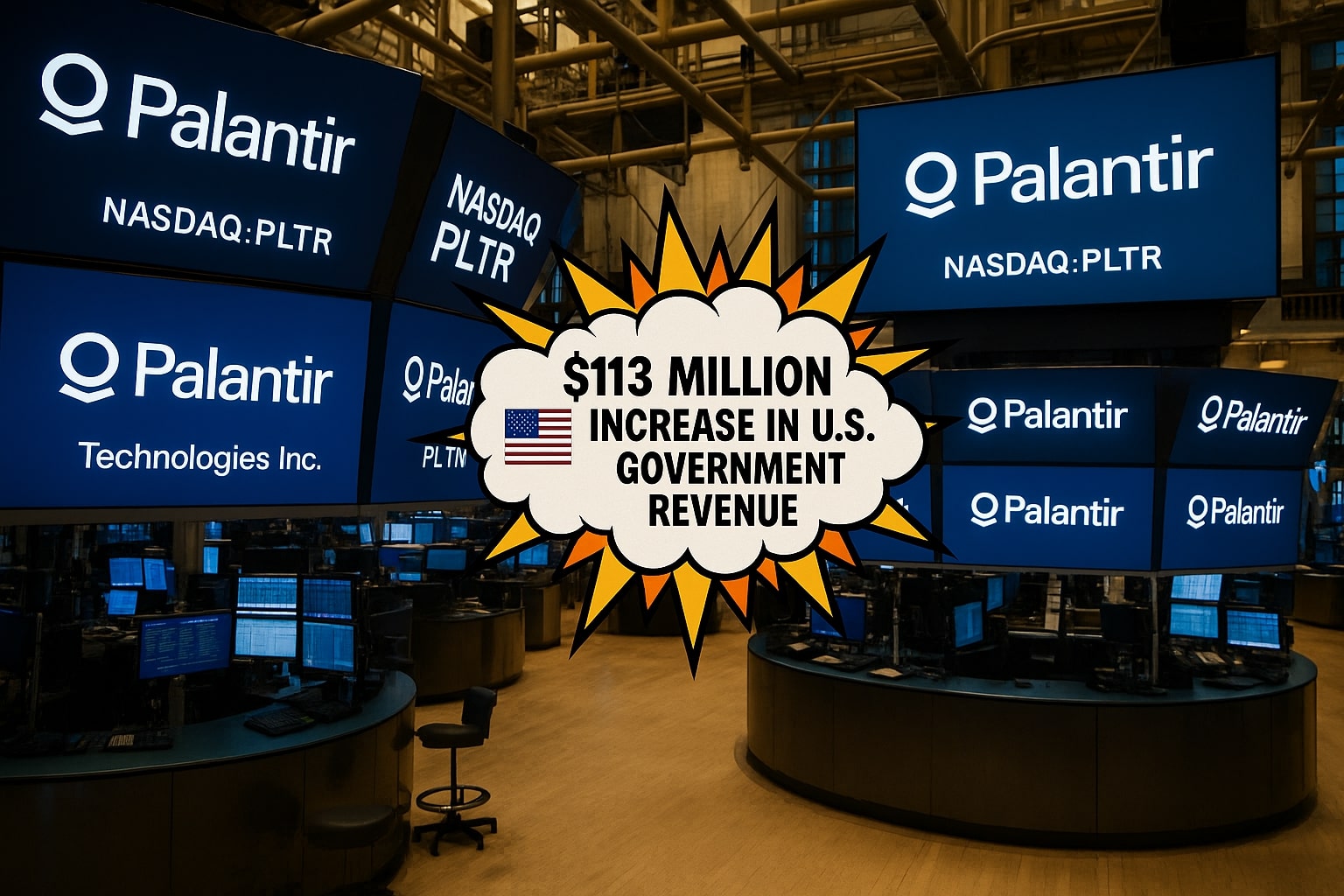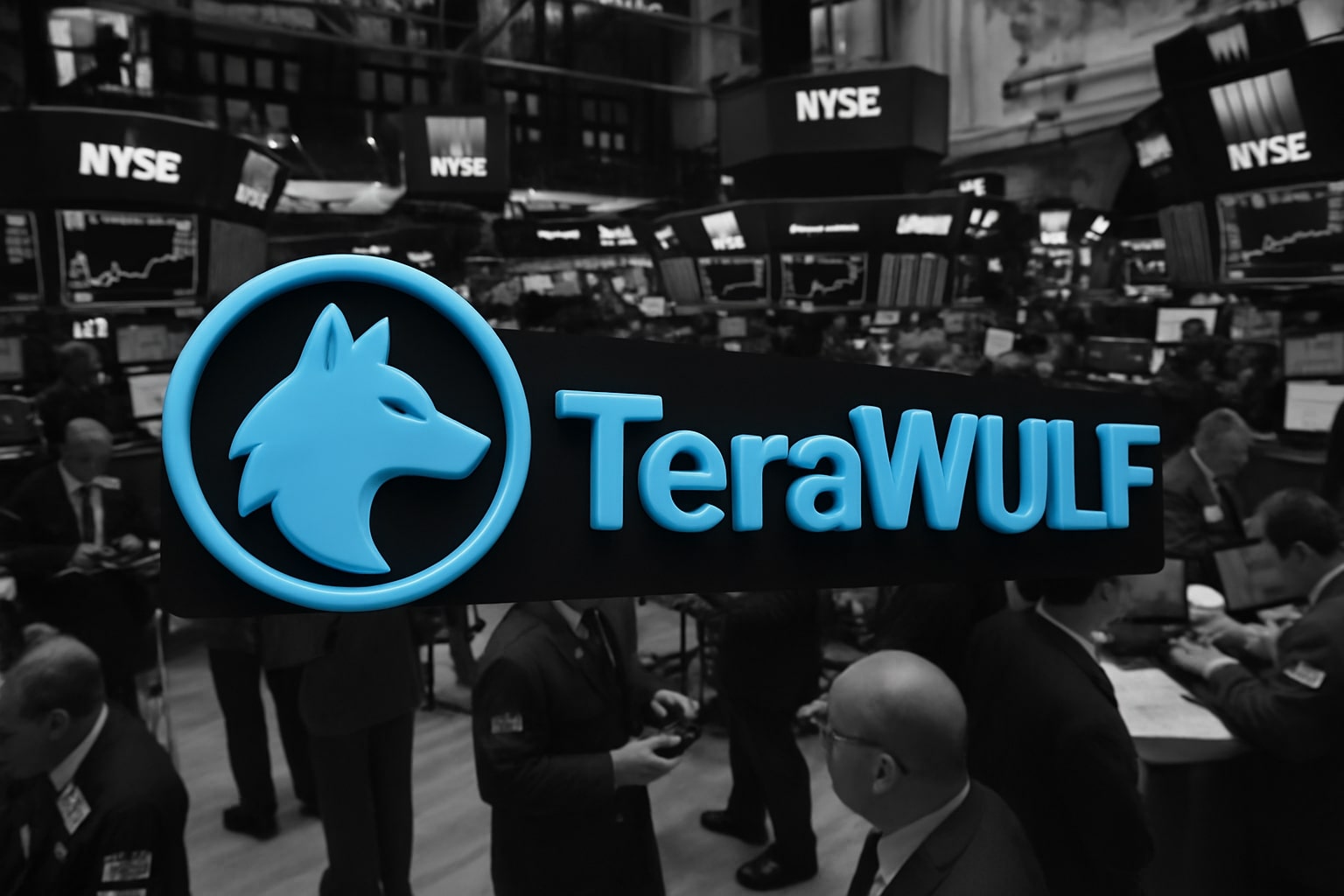NASDAQ:PLTR Powers Toward $2 Trillion Vision as AI Scale and Defense Dominance Converge
The structural case for NASDAQ:PLTR is no longer speculative—it’s operational. Palantir closed its most recent quarter with $884 million in revenue, marking a 39% year-over-year gain, with U.S. commercial growth hitting 71%. That surge not only eclipsed government growth for the first time in company history, but also confirmed that Palantir’s AI-native ontology is rapidly scaling into enterprise and civilian markets. The print triggered an upward revision of full-year guidance to $3.89–$3.90 billion, representing 36% revenue growth. But underneath that headline number is a deeper engine of high-margin expansion, hyperscaler alignment, and capital efficiency rarely seen in a software vendor with sub-$50 billion market cap.
AI Infrastructure Economics Sharpen the Bull Thesis for NASDAQ:PLTR
The driving catalyst remains the exponential decline in AI inference costs. Stanford’s 2025 AI Index reports a 280x reduction in GPT-3.5-class model pricing in just 18 months, while data from Andreessen Horowitz confirms a 1,000x drop over three years. With AWS Trainium 2 instances renting at half the rate of NVIDIA H100s, and Palantir’s Apollo layer abstracting cloud dependencies entirely, the company is structurally positioned to route workloads to the most cost-efficient chipsets in real time. This cloud-agnostic flexibility lets customers toggle between Azure, AWS, or Databricks infrastructures—whichever offers the best compute-per-dollar on any given day—without needing to refactor codebases.
That architectural edge converts into platform stickiness. When model execution costs fall from $60 per million tokens to $0.06, as Stanford’s benchmarks illustrate, the decision to deploy large-scale twins across manufacturing, healthcare, or logistics moves from aspirational to budget-neutral. Palantir’s Foundry enables non-engineers to drag and drop these models into live systems through its low-code agent interface, embedding LLM-driven logic directly into operational pipelines without ticket queues or IT bottlenecks.
Digital Twin Dominance and Edge Connectivity Expand NASDAQ:PLTR Surface
The backbone of Palantir’s commercial expansion is its grip on the emerging digital twin economy. Forecasts from IDC suggest that 35% of the Global 2000 will operate digital supply chain twins by 2027, a seismic leap from today’s pilot-heavy environment. Palantir’s strength lies in the ability to ingest structured and unstructured data—from IoT telemetry, MES systems, ERP flows—and semantically model it through a native ontology. That allows for real-time optimization of logistics, factory torque, energy demand, and more—at a scale previously cost-prohibitive.
Edge deployment magnifies that effect. Gartner estimates 75% of enterprise data will be generated outside traditional data centers by 2025, up from just 10% in 2018. That edge data, coupled with GSMA’s 5G coverage now reaching over two billion links, means Palantir’s ability to run low-latency decision loops on everything from field operations to critical defense platforms is no longer constrained by connectivity. That opens the door to high-frequency applications like predictive maintenance, AI-driven robotics, and sub-second control systems—workflows that cannot be served by batch analytics or centralized processing.
Regulatory Demand for Data Sovereignty Adds Tailwind
Palantir has turned data sovereignty from a compliance liability into a growth asset. With confidential computing revenues projected to grow from $24 billion in 2025 to over $350 billion by 2032, its ability to operate within AWS Nitro Enclaves, isolate sensitive workloads, and meet sovereign data mandates across healthcare, defense, and biotech positions the firm as the default vendor for AI in regulated verticals. These in-enclave capabilities are increasingly non-negotiable, and competitors without this infrastructure-grade trust layer are effectively barred from large chunks of the global AI spend.
Hyperscaler Partnerships Provide Accelerant, Not Headwind
Contrary to the commoditization thesis, Palantir’s alignment with hyperscalers has never been tighter. Azure Government now runs Palantir Foundry and Gotham at Impact Level 6, enabling secure AI deployments inside classified U.S. defense agencies. AWS designates Palantir as an Advanced Technology Partner, citing joint wins like the UK NHS and U.S. Army TITAN initiative. Meanwhile, the Databricks collaboration, inked in March 2025, eliminates traditional ETL friction through zero-copy architecture, linking Unity Catalog and Palantir’s Virtual Tables for seamless analytics fusion. Every AIP query that touches Spark spins compute on the underlying cloud, creating a flywheel where Palantir gets the orchestration premium and hyperscalers capture incremental GPU rent.
That mutual incentive model mirrors Salesforce’s early role in scaling AWS—far from competing, Palantir fills underutilized silicon with new workloads hyperscalers would not win organically.
Agent-Driven Interfaces Anchor the Next UX Shift
A tectonic shift is underway in enterprise UX, and Palantir is at the center of it. According to Gartner, 70% of enterprise apps will be built via low-code or no-code by 2026, up from 25% just two years ago. Palantir’s Agentic Interface Platform (AIP) leads that evolution. Users can now query the ontology in natural language, drive operational responses, and audit decision trails with semantic rigor. Unlike generic LLM wrappers prone to hallucination, Palantir agents draw from typed, domain-vetted schemas, dramatically reducing compliance risks.
Every new agent adds marginal value at near-zero compute cost, meaning a field engineer can deploy dozens of LLM assistants without hitting budget ceilings. For Palantir, which monetizes both through platform fees and infrastructure revenue share, this creates multi-layered monetization: one from seat licenses, another from GPU usage. As compute prices decline, usage soars, and Palantir captures both velocity and volume.
NASDAQ:PLTR Financials Show Operational Scale and Maturity
In Q1 2025, NASDAQ:PLTR generated $214 million in operating income, translating to a 24% margin—doubling its margin from a year earlier. Gross margins remained at 80%, and free cash flow reached $301 million, a 34% FCF margin. Notably, stock-based compensation dropped to 18% of revenue, a major improvement from 29% two years ago, and a signal that GAAP profitability is sustainable without financial engineering.
The company holds $4.3 billion in cash and carries zero debt, giving it optionality for selective M&A, share buybacks, or weathering cycles without dilution. Management raised its full-year U.S. commercial revenue growth target to 68%, and if this pace continues, Palantir will cross $4 billion in total revenue before FY 2026.
Insider transactions can be monitored at this link, where recent executive activity shows controlled selling amid a fivefold 12-month rally—suggesting disciplined internal conviction and no signs of panic distribution.
Defense and Healthcare AI Lead $10 Trillion Total Addressable Market for NASDAQ:PLTR
Palantir’s presence in defense continues to expand, most recently with a $795 million U.S. Army contract modification, while its software powered operations in the Israel-Iran and Ukraine-Russia conflicts. Reports from 2024 and early 2025 confirm that Palantir platforms helped Ukraine bypass Russian jamming and electronic warfare systems and were used in Israel’s air campaign to detect anomalies in real time.
Meanwhile, its long-term partnership with the Joint Commission and recent collaboration with TeleTracking push Palantir deeper into the $8 trillion healthcare sector, with the global “AI in Healthcare” market forecast to exceed $200 billion by 2030, growing at nearly 40% CAGR. As regulatory demand for hospital data accuracy rises, and AI becomes mission-critical in triage, scheduling, and analytics, Palantir’s end-to-end stack provides one of the only platforms capable of handling encrypted real-time analytics with sovereign-level control.
NASDAQ:PLTR Valuation: Expensive Multiples, But Relative Value Still Strong
At 85x forward free cash flow and 22x forward sales, the stock screens richly, but when benchmarked against operating leverage and growth momentum, the multiple compresses. Snowflake, for instance, trades at 19x sales with only mid-20% growth and near-flat FCF. C3.ai trades at 6x revenue but operates with negative margins and sluggish top-line momentum. Palantir, in contrast, is printing 40% growth, 34% cash conversion, and sits on one of the cleanest balance sheets in the sector.
Assuming a conservative 3% share of the projected $4.8 trillion AI market by 2033, and a 33% FCF margin priced at a 50x multiple, Palantir’s intrinsic value crosses the $2 trillion mark—more than a 6x uplift from today’s valuation, implying an annualized return of over 25%.
On a relative basis, if it maintains current growth and FCF conversion rates through 2026, the stock could rerate materially higher without multiple expansion, simply by compounding revenue and margin growth. While macro shocks or regulatory intervention could compress those forecasts, the AI compute curve and edge data trends provide ample cushion.
Final Verdict on NASDAQ:PLTR: Strong Buy
All current data across revenue, architecture, partnerships, vertical expansion, compute economics, and insider behavior support a decisive Strong Buy stance on NASDAQ:PLTR. The narrative is no longer speculative. This is a foundational infrastructure company monetizing both usage and control in a $10+ trillion secular market wave—military, healthcare, edge, and twin orchestration. The upside is deeply asymmetric.



















